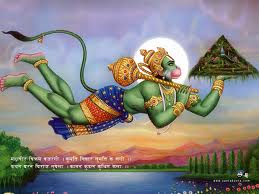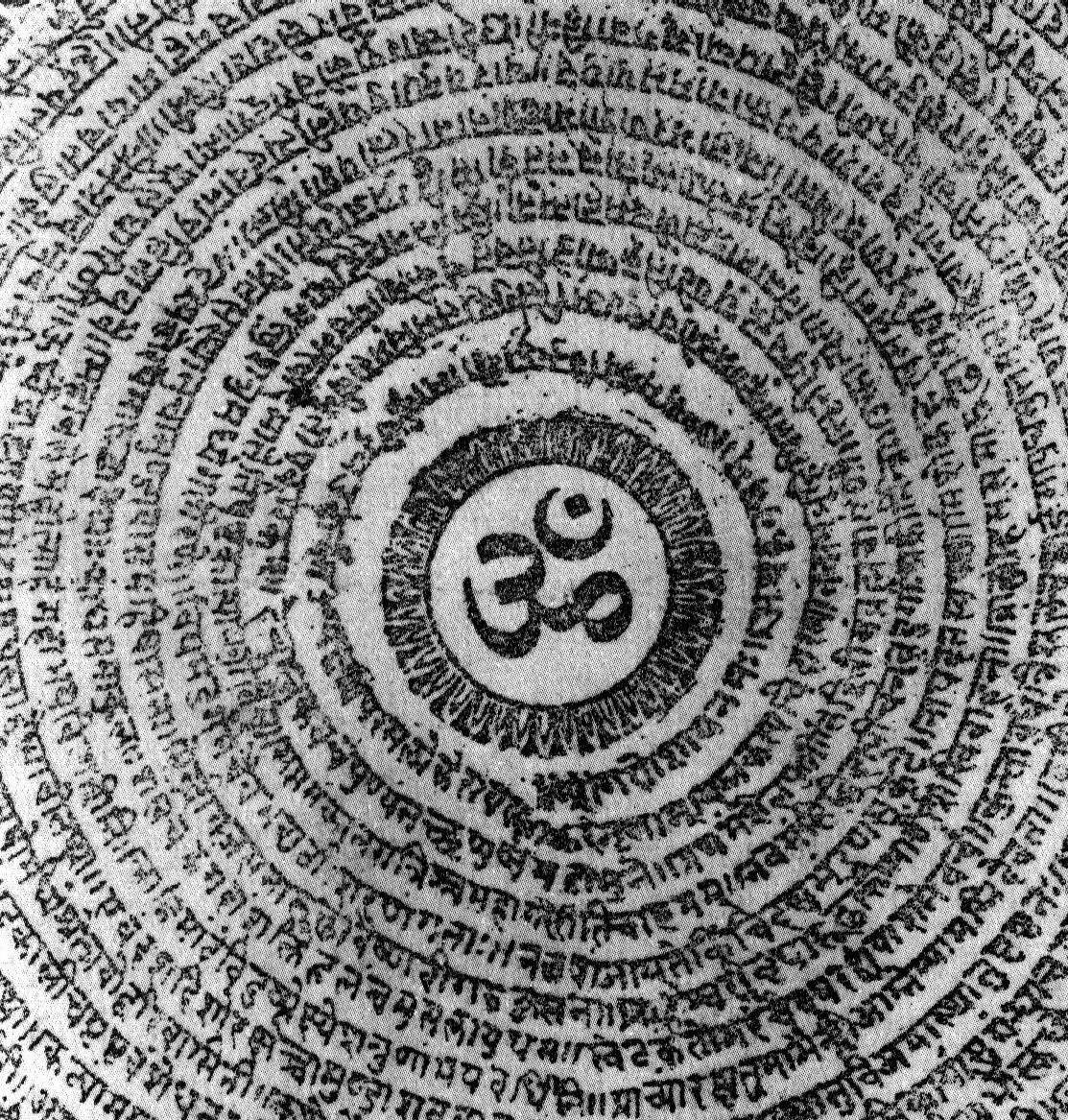Thoughts on Mantra: What I’m Doing Isn’t Working! Help!
There are often complaints which come in from time to time to the Masters.
They include: ‘I have seen very little benefit from this mantra,’ or ‘I have been chanting for a long time and yet I still have these problems,’ etc.
There are two cardinal rules when it comes to mantras:
- Benefits are proportional to effort.
- Karma is the greatest influence on your success.
Benefits vs. effort
The idea has been put forward a number of times on this blog.
If you are not feeling that you are advancing, then redouble your efforts – literally! Start afresh from an auspicious day and double the amount of times you are chanting.
If time is really a constraint, then redouble your concentration over the allocated time for meditation. A greater level of intensity of your prayer will deliver benefits more quickly than japa for the sake of it.
That’s not to say japa without the emotion behind it will not help – the mantra itself will help you either by directing someone to teach you how to chant it or to explain where you are going wrong in your efforts. Either way, stick with it for a proper period before considering another route!
Once the benefits start to flow, you should steadily increase your japa to see a steep improvement in your life.
The Law of Karma
Karma is called a Law of the Universe for a reason: it is immutable. One must understand that the effects of past actions will inevitably catch up with you in one form or another.
However, God has given us a powerful method to cope with this: free will. Current and future actions also accrue positive Karma, which can be used to offset the negative and create beneficial future events for ourselves.
The offset of bad karma is key. One can steadily erode (but not completing diminish) the negative effects of karma through mantras. The most general prayers (often also the simplest) offering prostrations to the highest deities in the Hindu pantheon will have the greatest effect.
If you find you are making little progress in your sadhanas, then undertake some karma dissolving sadhana immediately before starting a new anusthan or puruscharan.
Finally
If all else fails, there is no harm or shame in considering other options. Some souls are not due to take the path of mantra japa and it is more appropriate for them to follow other paths of Yoga.
It is extremely difficult for anyone to be able to judge who should move on and when. That is for you with the help of your Guru to make such a decision. However, I would expect an aspirant to try any one method for a number of years before taking such a step.
Follow me on Twitter: @MantraYogi
Thoughts on Mantra: The Easiest Path is Often the Most Dangerous
Don’t take the easy way out!
The practice of worshipping demons, ghosts and lesser devatas (demigods) is rife even today in India and abroad.
The ‘benefits’ of such practices, if one may call it a benefit, is that the practitioner gains quick siddhis as very little sincerity or devotion is required. The downside however is one enters a binding contract with potentially negative consequences!
Self control is better than controlling other beings
There are various forms of known Tantric practices out there which can instruct one on how to gain the control of ghosts and demons to do your bidding.
This is highly undesirable for a number of reasons. If one is weak-minded enough to choose such a simplistic path to their goals, it is undoubted they can become corrupted by such power.
Moreover, there are more serious consequences: the captive spirit must be continually satisfied by your oblations and prayers. They are sustained in this way. If or when this ceases, some may turn violent and inflict mental and physical harm to the captor.
Lessor deities are a step up but still not the ideal
Similar practices exist to gain the favour of the Gandharvas (divine musicians), Apsaras (divine dancers) and Yakshas (divine artists).
There is extreme temptation for one to seek sensory satisfaction from these deities. However, the level and duration of the benefits are always in proportion to the level of deity you summon.
Once the benefits wear off, one will only waste time in performing yet another sadhana for further benefits.
Pray to the highest Gods
The higher Gods, those that offer Moksha as the end-goal are indeed the most desirable for a number of reasons; not least because Moksha should be the aim of all beings!
- Any siddhis and blessings gained are permanent, at least across a lifetime. If one had certain benefits in a prior life it is very easy for the aspirant to re-create the benefits in the current.
- Blessings will never have negative effects; everything that happens is for righteous and ultimately beneficial reasons.
- They offer protection at all times to their devotees.
- Partial sadhanas still yield partial benefits if incomplete or done incorrectly by accident.
- The benefits are broad and not just what you pray for. For example, one praying for fame will also see a proportional level of wealth, not just one or the other.
- Even more importantly than the prior point, peace always accompanies a blessing.
- Devotion (Bhakti) trumps all when it comes to pleasing the deity.
Look at your own life in understanding this idea. Is it not true that nothing worth having is ever easy to attain?
Follow me on Twitter: @MantraYogi
Secrets of the Hanuman Chalisa (Part 4)
This post continues the series on the Benefits of the Hanuman Chalisa.
The final set of seven benefits
Here are the benefits from the final set of verses:
- Ability to bear physical pain: Verse 25 (Naasai roga harai…)
- Victory over enemies: Verse 30 (Saadhu Santa ke…)
- Siddhis (occult powers) and Wealth: Verse 31 (
- Ethical judgement: Verse 32-35 (Raama rasaayana… to Aura Devataa Chitta…)
- Mental peace: Verse 36 (Sankata katai mitai…)
- The Grace of Hanuman: Verse 37 (Jai Jai Jai Hanumaana…)
The method of sadhana for the Hanuman Chalisa
Aspirants often ask how many times to chant the Chalisa.
It is noted that 1, 3, 9, 11 and 108 times are the most auspicious numbers, although there is no real limitation or wrong way of chanting it! More importantly, dedication, regularity and devotion are key. The most auspicious times and days are during the twilight hours on Tuesdays and Saturdays, although again, this is a stotra one can learn and recite daily.
For those who want to attempt the higher number of repetitions but feel they are unable to get the pronunciation correct, I have updated the Listen to Mantras page on the blog (click here to access it) with a fast version (recited within 3mins). It is therefore possible to finish a full 108 within a few hours.
Sri Rama Jaya Rama Jaya Jaya Rama!
Check my blog frequently to keep up to date with new articles on Hanuman!
https://swamimantrayogi.wordpress.com
Follow me on Twitter: @MantraYogi
Secrets of the Hanuman Chalisa (Part 3)
This post continues the series on the benefits of the Hanuman Chalisa. We have so far learned that the hymn helps the sadhak with everything from dissolving bad karma to attaining the heights of fame!
The second set of severn verses
Here are the benefits from the next seven verses:
- Restores and improves career/social status: Verses 16-17 (Tuma upakaara Sugreevahin… and Tumharo mantra Vibheeshana…)
- Accomplish difficult tasks, break obstacles: Verse 20 (Durgama kaaja…)
- Protection from malefic effect of planets: Verse 22 (Saba sukha lahai…)
- Protection from Black Magic and spirits: Verse 24 (Bhoota pishaacha…)
- Health: Verse 25 (Naasai roga…)
- Rescue from crisis: Verse 26 (Sankata ten Hanumaana…)
- Fulfilment of desires: Verses 27-28 (Saba para Raama… and (Aura manoratha jo…)
Follow me on Twitter: @MantraYogi
Secrets of the Hanuman Chalisa (Part 2)
More than a hymn
As discussed in the first post in this series (click here to read it if you missed it or wish to recap), the Hanuman Chalisa is far more powerful than a simple devotional hymn.
Sadhaks have long discovered that there are specific benefits to chanting certain verses.
The benefits were outlined in the prior post. This part looks at the verses behind the first seven benefits, as below.
The first seven verses and benefits
- Removal of bad karma accrued against Guru or fellow devotees: First opening verse (Shree Guru Charana…)
- Wisdom and strength: Second opening verse (Buddhi Heena Tanu…)
- Divine knowledge (Brahmavidya): Verse 1 (Jaya Hanumaana gyaana…)
- Remove bad habits and company: Verse 3 (Mahaaveera Vikrama…)
- Cultivates bhakti: Verses 7 and 8 (Vidyaavaana gunee… and Prabhu charitra…)
- Protection from snakes and bites: Verse 11 (Laaye Sanjeevana…)
- Fame: Verses 13-15 (Sahasa badana…, Sanakaadika Brahmaadi…, Yama Kuber …)
Follow me on Twitter: @MantraYogi
Secrets of the Hanuman Chalisa (Part 1)
A powerful technology for all-round benefits
The Hanuman Chalisa has benefited millions across generations through its mantra-shakti and ability to incite the deepest devotion in the most intensely troubled sadhak.
But do not think it to be limited to merely improving your state of mind! It is indeed an intensely powerful stotra (hymn) which can endow the saadhak (spiritual aspirant) with real power – physical, metaphysical and spiritual; and both for daily life and also for esoteric purposes.
A quick recap of the basics….
We have already covered the basic benefits of the Chalisa – building character and Ram Bhakti. You can read the prior articles on Hanuman by clicking here and here; they provide a quick refresher on his attributes and the general benefits of Hanuman worship.
…then onto the master class!
The Hanuman Chalisa is a hymn of 40 verses adoring Hanuman and his great achievements in the context of the epic Ramayana. Each verse is also known as a chaupai (4 legged) and consists of a rhyming couplet.
It is the essence of the Sundara Kand of the Ramayana. In fact this is one of the very reasons for its unbelievable power to help any devotee – the Sundara Kand is prescribed to anyone with a strong will to make something happen which is beyond their control – one prominent example is hastening marriage.
There are of course a much broader set of benefits to reading or listening to the Chalisa daily – here is a full list:
- Removes bad karma of unknowingly insulting or harming a Guru or fellow devotee
- Wisdom and strength
- Divine knowledge
- Remove bad habits and company
- Cultivates bhakti
- Protection from snakes and bites
- Fame
- Restores and improves career/social status
- Protection from malefic effect of planets
- Accomplish difficult tasks, break obstacles
- Rescue from crisis
- Fulfilment of desires
- Protection from Black Magic and spirits
- Health
- Ability to bear physical pain
- Victory over enemies
- Siddhis (occult powers)
- Wealth
- Mental peace
- Ethical judgement
- The Grace of Hanuman
This series will highlight which specific verses provide each of the benefits. within the Chalisa can be recited on their own as ‘mini-mantras’ to gain specific benefits.
Follow me on Twitter: @MantraYogi






